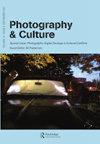Selecting Views of Las Trampas: Contact Sheets by Fred E. Mang Jr. and David Jones at the New Mexico State Records Center and Archives
IF 0.3
4区 艺术学
0 ART
引用次数: 0
Abstract
The northern New Mexican village of Las Trampas (Spanish for “The Traps”) was established with a communal land grant in 1751 by twelve ethnically and racially mixed families of Gen ızaro, Tlaxcalan, African, and Spanish descent from El Barrio de Analco, a lower-class district located on the south side of the Santa Fe River (McDonald 2002, 36). Bestowed by the provincial governor, the original land grant included 46,000 acres for the development of agriculture and livestock. The place name of Santo Tom as del R ıo de las Trampas is presumed to reference beaver traps along the river; however, writer William DeBuys infers a grim irony in the etymology of the isolated settlement founded as a redoubt (Julyan 1998, 294). These early residents “must have been keenly aware that their future home might eventually be a trap for them,” speculates DeBuys (1981, 72). Although the United States Congress upheld the validity of the Las Trampas Land Grant in 1860, the Anglo-American legal system set another series of traps that dispossessed villagers of their communal property in the early 1900s. After the Las Trampas Lumber Company declared bankruptcy in 1926, the United States Forest Service took ownership of the Las Trampas Land Grant (Guthrie 2013, 183). Held in the David Jones Collection at the New Mexico State Records Center and Archives, folders of contact sheets (c. 1966–67) made by Jones (1914–88) and his National Park Service colleague Fred E. Mang Jr. (1924–) depict Las Trampas, its residents, and their built environment. Mang, a staff photographer who specialized in scientific and选择拉斯特拉帕斯的景色:小弗雷德·E·芒和大卫·琼斯在新墨西哥州记录中心和档案馆的联系单
新墨西哥北部的Las Trampas村(西班牙语为“The Traps”)是在1751年由12个种族和种族混合的家庭建立的,这些家庭来自El Barrio de Analco,这是一个位于圣菲河南岸的下层阶级地区。最初由省长授予的土地包括4.6万英亩,用于发展农业和畜牧业。圣汤姆的地名为del R ıo de las Trampas,据推测是指河边的海狸陷阱;然而,作家William DeBuys从词源中推断出一个残酷的讽刺,这个孤立的定居点被建立为一个堡垒(Julyan 1998,294)。这些早期的居民“一定敏锐地意识到,他们未来的家最终可能成为他们的陷阱,”戴贝斯推测(1981,72)。尽管美国国会在1860年支持拉斯特朗帕斯土地赠款的有效性,但英美法律体系又设置了一系列陷阱,在20世纪初剥夺了村民的公共财产。1926年,拉斯特朗帕斯木材公司宣布破产后,美国林务局获得了拉斯特朗帕斯土地赠款的所有权(Guthrie 2013, 183)。在新墨西哥州记录中心和档案馆的大卫·琼斯收藏中,琼斯(1914-88)和他的国家公园管理局同事小弗雷德·e·芒(1924 -)制作的联系表文件夹(约1966-67)描绘了拉斯特朗帕斯,其居民和他们的建筑环境。他是一名专门从事科学和科学摄影的专职摄影师
本文章由计算机程序翻译,如有差异,请以英文原文为准。
求助全文
约1分钟内获得全文
求助全文

 求助内容:
求助内容: 应助结果提醒方式:
应助结果提醒方式:


